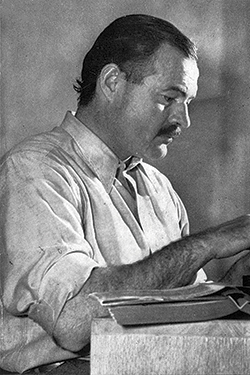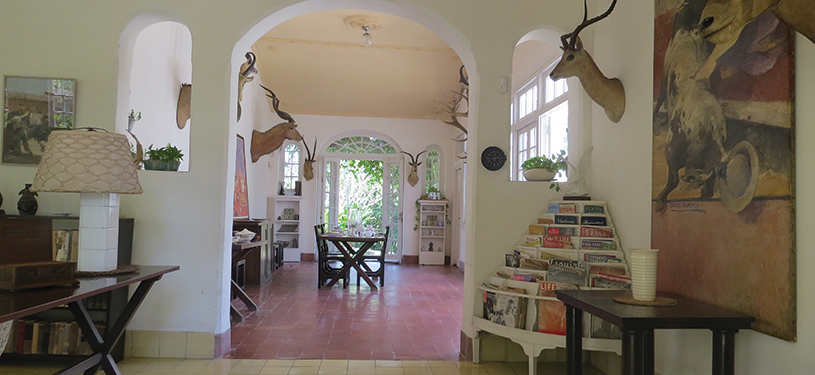The legendary Ernest Hemingway spent more than two decades of his life in Cuba. It’s where he wrote For Whom the Bell Tolls and The Old Man and the Sea, among other acclaimed works. It’s where he accepted the 1954 Nobel Prize for Literature, which he dedicated and gifted to the Cuban people. It’s where he drank and fished, entertained guests and enjoyed the island lifestyle.
When he departed Cuba in 1960, Hemingway left behind an astounding assemblage of material, including thousands of letters, manuscripts and photographs, his fishing tackle and guns, a priceless art collection and a 9,000-book library—many of which contain his handwritten annotations. After his death, the Cuban government took over his home, known as Finca Vigía, or “lookout farm,” and ran it as a museum. Located nine miles from downtown Havana, the Museo de Ernesto Hemingway is a popular tourist destination, yet the island heat and humidity has caused it to rank among the world’s most endangered historic sites.
 Since 2002, The Finca Vigía Foundation has worked to preserve the estate, restore Hemingway’s fishing boat and conserve his documents. Now the Boston-based foundation is building a museum-quality conservation laboratory and archival storage facility to preserve these irreplaceable items. In March, Caterpillar Inc. and the Caterpillar Foundation announced a $500,000 donation to support construction of the facility, known as the “Taller” building. The company later added to this financial gift with the donation of a Cat skid-steer loader.
Since 2002, The Finca Vigía Foundation has worked to preserve the estate, restore Hemingway’s fishing boat and conserve his documents. Now the Boston-based foundation is building a museum-quality conservation laboratory and archival storage facility to preserve these irreplaceable items. In March, Caterpillar Inc. and the Caterpillar Foundation announced a $500,000 donation to support construction of the facility, known as the “Taller” building. The company later added to this financial gift with the donation of a Cat skid-steer loader.
“Caterpillar is proud to be a part of this significant project,” said Doug Oberhelman, chairman and CEO, who led a company delegation to the island in May. “Because of our own deep history and rich heritage, we recognize the importance of preserving the rich Hemingway heritage that unites the American and Cuban people.”
The project is the first in Cuba to use modern U.S. building materials since the 55-year-old trade embargo was imposed. Easily replicable, the new construction is expected to serve as a model for similar sites across the country, all of which face the same environmental challenges, including mildew, termites and fluctuations in temperature and humidity.
At the end of May, two shipping containers arrived at the museum, containing “roof tiles, wall tiles, hurricane-resistant windows, rough plumbing and electrical [components], mortar and more building tools than you can imagine,” describes Mary-Jo Adams, executive director of The Finca Vigía Foundation. It was the first of four shipments, scheduled to arrive in phases.
“We estimate that Phase 2 will be sent at the end of this year,” Adams adds. “It will contain an HVAC/ventilation system, exhaust hood, electrical wiring, switches and outlets, low-voltage system wiring, light fixtures and lamps. Phase 3 and 4 will be shipped in the spring of 2017, if all goes according to plan.”

Caterpillar has long called for an end to the U.S. embargo of Cuba, and had previously donated generator sets to support Cuban hospitals. As relations between the two countries continue to improve, Caterpillar stands ready to serve as a committed business and cultural partner. “We are especially grateful to Caterpillar for believing in us,” says Adams. “Our work would not be possible without the support of Caterpillar Inc. and the Caterpillar Foundation.” a&s
For more information visit fincafoundation.org.


